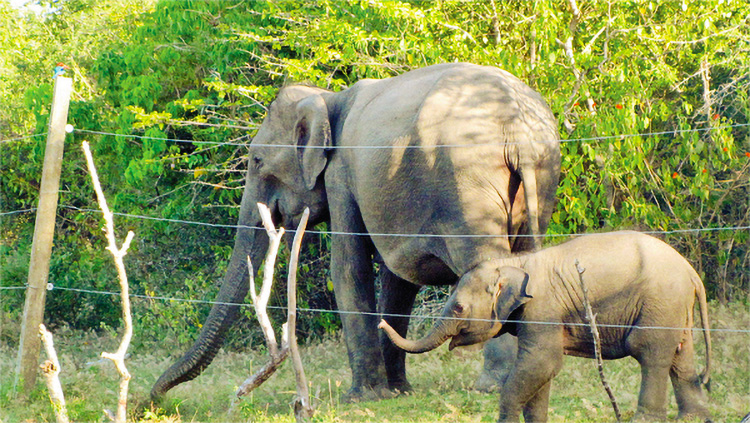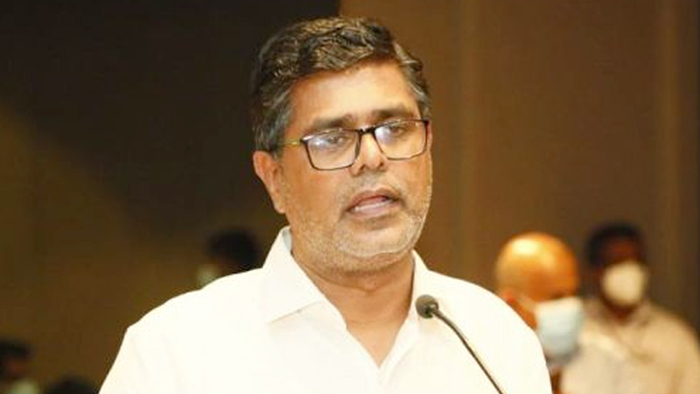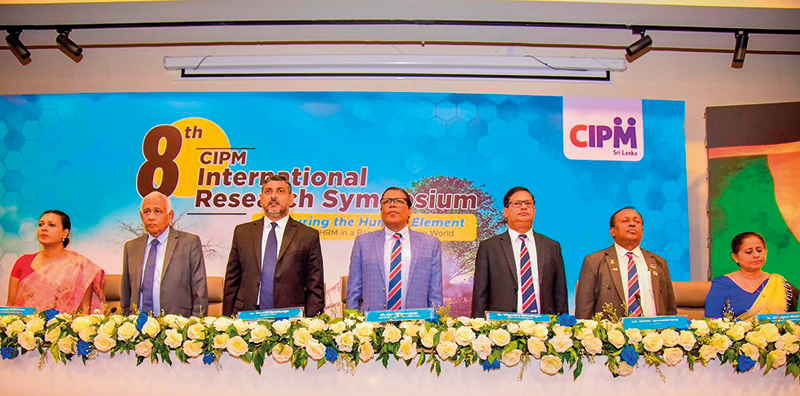News
Massive increase in deaths in human-elephant conflict since 1969; things to get worse due to donor dictates

By Rathindra Kuruwita
Annual elephant deaths have increased fourfold by this year, compared to 1969, according to official data, environmentalists say.
Sajeewa Chamikara of the Movement for Land and Agricultural Reform (MONLAR) has said the number of elephants killed in the 19 years from 1951 to 1969 was 1,163. This works out to about 61 elephant deaths a year.
“However, 5,010 elephants have been killed in the 19 year period from 2004 to April 2023.
Last year saw the highest number of elephant deaths recorded since Independence; 433 elephants were killed. The highest number of human deaths also occurred due to elephant attacks, in the same year. The number of human casualties were 145, Chamikara said.
“In the 34 years from 1990 to April 2023, a total of 6,642 elephants have died. About 70% of them were killed by humans as a result of the human-elephant conflict. Meanwhile, 2,032 people were killed in elephant attacks in the 26 years from 1998 to April 2023,” he said.
Many believed that an increase in elephant population had contributed to the human-elephant conflict. However, there was no evidence to suggest that the elephant population was on the rise, Chamikara said.
“The last elephant census in Sri Lanka was conducted in 2011. According to the census, 5,879 elephants were reported. However, during the period of over 12 years since the last census, 3,685 elephants have died. The belief that the elephant population has grown stems from an increasing number of elephant attacks on villages. However, these elephants have been compelled to maraud villages because their natural habitats have been destroyed. The elephant population is also dissipating due to the change in the ratio between females and males due to the elimination of males. Tuskers are males and most of the elephants that come into villages are strong male elephants. It is often these animals that are killed,” he said.
According to a report published by the Department of Forest Conservation, following a survey of forests in 2010, the extent of forest cover in the country is 1,951,473 hectares, accounting for 29.7 percent of the total area of the country. Elephants lived mainly in tropical dry mixed evergreen forests belonging to the intermediate, dry and arid zones, tropical moist evergreen forests, savanna grasslands and tropical thorn scrubs, Chamikara said.
“Since 2010, things have taken a turn for the worse. Large-scale investment projects, especially commercial plantations, have been implemented under successive National Physical Plans and on policy decisions taken as per the conditions laid out by the World Bank and the International Monetary Fund (IMF). These have led to deforestation. As a result, many of the natural habitats of elephants have been destroyed and forests have been fragmented, making elephants move from one forest to the other through human settlements. These moves have been identified as the main reasons that have aggravated the human-elephant conflict today,” he said.
“When giving loans to Sri Lanka, the World Bank and the International Monetary Fund highlight that state revenue must be increased to repay the loan installments and interest, the environmentalist said, adding that in doing so, the governments might make decisions that adversely affect natural resources of Sri Lanka.
“In a report, titled “Sri Lanka Non-plantation Crop Sector Policy Alternatives” the World Bank in 1996, to develop Sri Lanka’s agricultural sector, has said that the small-scale agriculture carried out by the small-scale farmers in Sri Lanka is not profitable. Therefore, the report suggests that these extents of land be utilised for large-scale commercial plantations,” Chamikara said.
The report titled ‘Sri Lanka Ending Poverty and promoting shared prosperity: A systematic country diagnostic’ published by the World Bank in 2015 focused on the strategies that the government should take to alleviate poverty in Sri Lanka. The report said that complicated local land laws and the restrictions on foreigners when acquiring lands have adversely affected investment opportunities. As a result, it said that lands should be subjected to the free market mechanism, he said.
The provision of trade and investment facilities included in the loan conditions of the IMF in 2016 and taking measures to increase the State revenue included in the loan conditions of 2023 requires the government-owned land to be exposed to the market mechanism, Chamikara said. All the governments in the recent past have taken steps to fulfil these requirements by reforming policies and ordinances and the main step towards that was the withdrawal of the Circular No. 05/2001 under the Gotabaya Rajapaksa administration, he said.
Accordingly, the Environment and Wildlife Resources Ministry Secretary issued the Circular MWFC/01/2020 on 04 November 2020 based on a Cabinet paper submitted by the Minister of Environment and Wildlife Resources which was approved by the Cabinet on 01 July 2020. The Circular MWFC/01/2020 said that State-owned lands should be kept under the purview of Divisional Secretaries and District Secretaries except for the lands gazetted as wildlife areas by the Director General of Forest Conservation and the Director General of Wildlife Conservation in a Gazette by cancelling the previously published Circulars No. 05/98 dated 01.07.1998, No. 5/2001 dated 10.08.2001 and No. 02/2006 dated 17.05.2006, he said.
Lands Ministry Secretary R.A.A.K. Ranawaka issued the circular No. 02/2021 on 6 August, 2021 for the purpose of “Demarcation of State-owned Lands” to all district secretaries and divisional secretaries. Since the divisional secretaries can measure and de-mark State-owned lands for various purposes based on Article 8 of the Land Development Ordinance and subject to general and special provisions of the Commissioner General of Lands, this circular emphasised on taking measures to identify lands and demark them in order to preserve for various future development activities and village expansion projects. This circular was issued by the Lands Ministry Secretary in accordance with the Cabinet Paper jointly submitted by the Minister of Wildlife and Forest Conservation, the Minister of Environment and the Minister of Lands which was approved by the Cabinet on October 26, 2020.
“Both these circulars have been issued in violation of Article 20 of the Forest Conservation Ordinance. According to the 2014 statistics of the Forest Conservation Department, there are 103 forests designated under Article 20 of the Forest Conservation Ordinance which are known as Proposed Reserves and Other State-owned Forests to be declared as reserves. The total area of these lands is 224,564 hectares or about 579,608 acres. All these forest lands, which is 11.5 percent of total forest cover in Sri Lanka, are to be acquired for development purposes through these circulars. This is significant since about 60% of these forests are home to elephants,” Chamikara said.
Minister of Wildlife and Forest Resources Conservation Pavithradevi Wanniarachchi told The Island that addressing the human-elephant conflict was a top priority of hers and that steps had already been taken to develop a new policy on resolving the issue.
She said that several initiatives had been taken by previous governments to address the problem and that there is a need to build elephant fences according to a master plan. “We have already conducted several workshops on this where lessons could be learnt from the past. Unfortunately, building high quality fences is expensive and given the economic situation in the country, this will take some time,” she said.
News
US sports envoys to Lanka to champion youth development

The U.S. Embassy in Colombo welcomed the U.S. Sports Envoys to Sri Lanka, former National Basketball Association (NBA) and Women’s National Basketball Association (WNBA) players Stephen Howard and Astou Ndiaye, from June 8 through 14.
The Public Diplomacy section of the U.S. Embassy said that it would launch a weeklong basketball program intended to harness the unifying power of sports, made possible through collaboration with Foundation of Goodness and IImpact Hoop Lab.
While in Sri Lanka, Howard and Ndiaye, both retired professional basketball players, will conduct a weeklong program, Hoops for Hope: Bridging Borders through Basketball. The Sports Envoys will lead basketball clinics and exhibition matches and engage in leadership sessions in Colombo and Southern Province for youth aged 14-18 from Northern, Uva, Eastern and Western Provinces, offering skills and leadership training both on and off the court. The U.S. Envoys will also share their expertise with the Sri Lanka Basketball Federation, national coaches, and players, furthering the development of basketball in the country. Beyond the clinics, they will collaborate with Sri Lankan schoolchildren to take part in a community service project in the Colombo area.
“We are so proud to welcome Stephen and Astou as our Sports Envoys to Sri Lanka, to build on the strong people-to-people connections between the United States and Sri Lanka,” said U.S. Ambassador Julie Chung. “The lessons that will be shared by our Sports Envoys – communication, teamwork, resilience, inclusion, and conflict resolution – are essential for leadership development, community building, equality, and peace. The U.S. Sports Envoy program is a testament to our belief that sports can be a powerful tool in promoting peace and unity.”
News
Rahuman questions sudden cancellation of leave of CEB employees

SJB Colombo District MP Mujibur Rahuman in parliament demanded to know from the government the reasons for CEB suspending the leave of all its employees until further notice from Thursday.
MP Rahuman said that the CEB has got an acting General Manager anew and the latter yesterday morning issued a circular suspending leave of all CEB employees with immediate effect until further notice.
“We demand that Minister Kanchana Wijesekera should explain this to the House. This circular was issued while this debate on the new Electricity Amendment Bill was pending. There are many who oppose this Bill. The Minister must tell parliament the reason for the urge to cancel the leave of CEB employees,” the MP said.However, Speaker Mahinda Yapa Abeywardena prevented Minister Wijesekera responding to the query and said that the matter raised by MP Rahuman was not relevant.
News
CIPM successfully concludes 8th Annual Symposium

The Chartered Institute of Personnel Management (CIPM) successfully concluded the 8th Annual CIPM Symposium, which took place on 31st May 2024. Themed “Nurturing the Human Element—Redefining HRM in a Rapidly Changing World,” the symposium underscored the pivotal role of human resource management (HRM) in today’s dynamic global landscape. Since its inception in 1959, CIPM has been dedicated to advancing the HR profession through education, professional development, and advocacy, solidifying its position as Sri Lanka’s leading professional body for HRM.
Ken Vijayakumar, the President of the CIPM, graced the occasion as the chief guest. The symposium commenced with the welcome address by the Chairperson, Prof. Arosha Adikaram, followed by the Web Launch of the Symposium Proceedings and Abstract Book by the CIPM President. The event featured distinguished addresses, including a speech by Chief Guest Ken Vijayakumar, President of CIPM, and an address by Guest of Honor Shakthi Ranatunga, Chief Operating Officer of MAS Holdings Pvt. Ltd., Sri Lanka.
The symposium also featured an inspiring keynote address by Prof. Mario Fernando, Professor of Management and Director of the Centre for Cross Cultural Management (CCCM) at the University of Wollongong, Australia.
Vote of Thanks of the inauguration session was delivered by Dr. Dillanjani Weeratunga, Symposium Co-chair.
The symposium served as a comprehensive platform for researchers to present their findings across a wide range of critical topics in HRM. These included Cultural Diversity and Inclusion, Talent Development and Retention, Ethical Leadership and Corporate Social Responsibility, Adapting to Technological Advancements, Mental Health and Well-being at Work, Global Workforce Challenges, Employee Empowerment, and Reskilling and Upskilling.
The plenary session was led by Prof. Wasantha Rajapakse. Certificates were awarded to the best paper presenters during the valedictory session, followed by a vote of thanks delivered by Kamani Perera, Manager of Research and Development.
The annual symposium of CIPM was a truly inclusive event, attracting a diverse audience that spanned undergraduates, graduates, working professionals, research scholars and lecturers. This widespread interest highlights the symposium’s significance in the field of HRM, offering a unique opportunity for everyone to network and learn from scholarly brains.The CIPM International Research Symposium was sponsored by Hambantota International Port, Sri Lanka Institute of Information Technology (SLIIT), E B Creasy & Co. PLC, and Print Xcel Company.












